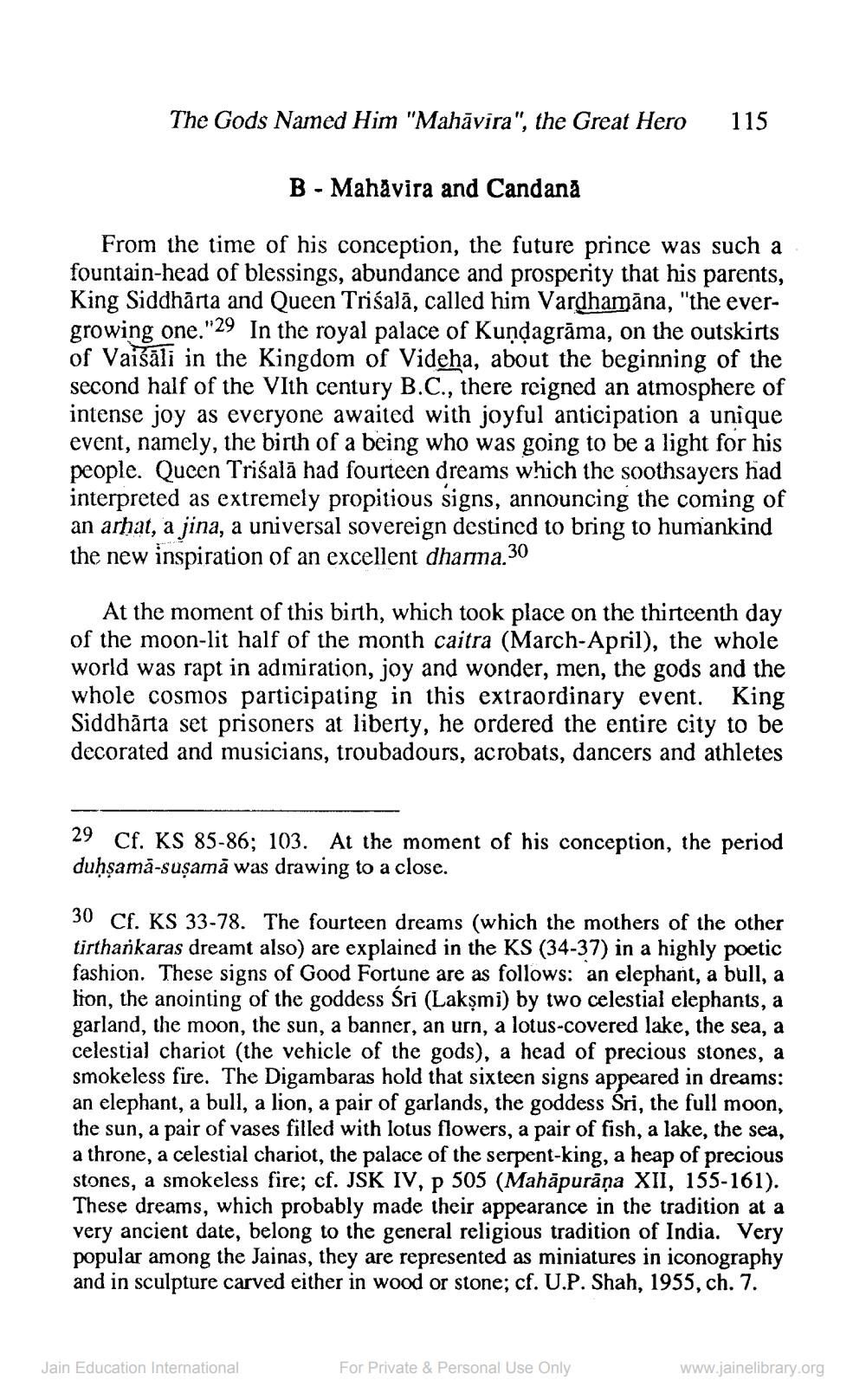________________
The Gods Named Him "Mahavira", the Great Hero 115
B - Mahavira and Candană
From the time of his conception, the future prince was such a fountain-head of blessings, abundance and prosperity that his parents, King Siddharta and Queen Triśală, called him Vardhamana, "the evergrowing one."29 In the royal palace of Kuṇḍagrama, on the outskirts of Vaisali in the Kingdom of Videha, about the beginning of the second half of the VIth century B.C., there reigned an atmosphere of intense joy as everyone awaited with joyful anticipation a unique event, namely, the birth of a being who was going to be a light for his people. Queen Triśalā had fourteen dreams which the soothsayers had interpreted as extremely propitious signs, announcing the coming of an arhat, a jina, a universal sovereign destined to bring to humankind the new inspiration of an excellent dharma.30
At the moment of this birth, which took place on the thirteenth day of the moon-lit half of the month caitra (March-April), the whole world was rapt in admiration, joy and wonder, men, the gods and the whole cosmos participating in this extraordinary event. King Siddharta set prisoners at liberty, he ordered the entire city to be decorated and musicians, troubadours, acrobats, dancers and athletes
29 Cf. KS 85-86; 103. At the moment of his conception, the period duḥṣama-suṣamā was drawing to a close.
30 Cf. KS 33-78. The fourteen dreams (which the mothers of the other tirthankaras dreamt also) are explained in the KS (34-37) in a highly poetic fashion. These signs of Good Fortune are as follows: an elephant, a bull, a lion, the anointing of the goddess Śri (Lakṣmi) by two celestial elephants, a garland, the moon, the sun, a banner, an urn, a lotus-covered lake, the sea, a celestial chariot (the vehicle of the gods), a head of precious stones, a smokeless fire. The Digambaras hold that sixteen signs appeared in dreams: an elephant, a bull, a lion, a pair of garlands, the goddess Śri, the full moon, the sun, a pair of vases filled with lotus flowers, a pair of fish, a lake, the sea, a throne, a celestial chariot, the palace of the serpent-king, a heap of precious stones, a smokeless fire; cf. JSK IV, p 505 (Mahāpurāṇa XII, 155-161). These dreams, which probably made their appearance in the tradition at a very ancient date, belong to the general religious tradition of India. Very popular among the Jainas, they are represented as miniatures in iconography and in sculpture carved either in wood or stone; cf. U.P. Shah, 1955, ch. 7.
Jain Education International
For Private & Personal Use Only
www.jainelibrary.org




